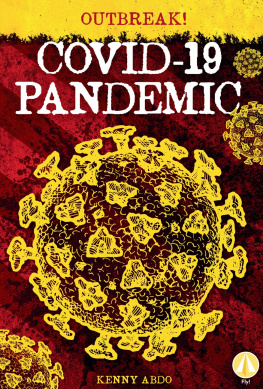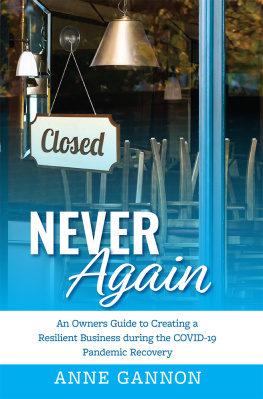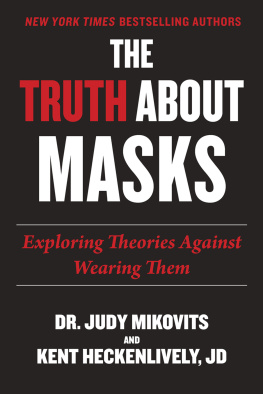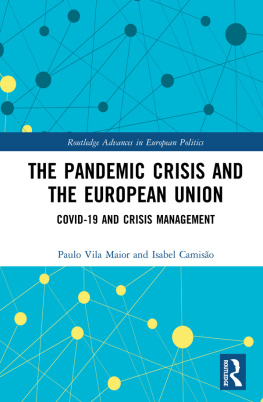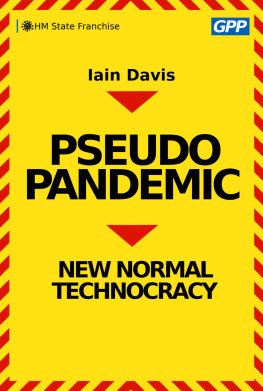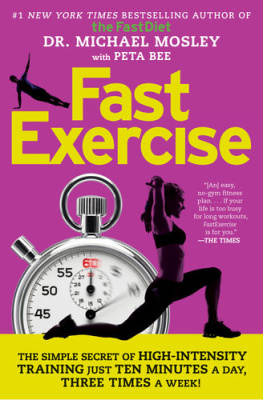PENGUIN BOOKS
TILL WE WIN
Dr Chandrakant Lahariya is a medical doctor and leading public policy and health systems expert. He has received advanced trainings in epidemiology, vaccinology, immunology and public health. He has extensive experience in disease control and elimination through his work on polio elimination, routine immunization strengthening as well as outbreak and epidemic investigations. In the last fifteen years, he has worked closely with Indias leading health policymakers to develop and implement several health policies and programmes at Union and state levels. At present, his work focuses on universal health coverage, primary healthcare and health systems strengthening. In 2012, he received the Indian Council of Medical Researchs (ICMR) Dr B.C. Srivastava Foundation Award for his work on translating community-based health research into public policy interventions. He is the youngest fellow ever elected to the Indian Public Health Association (IPHA).
Dr Gagandeep Kang is an infectious-disease researcher, who links community-based research to high-quality laboratory investigation. With thirty years of research at the Christian Medical College, Vellore, she has built collaborative programmes focused on enteric diseases, nutrition and the environment. She supported the development of two rotavirus vaccines made by Indian companies through clinical and laboratory testing. She serves on many advisory committees in India and internationally. She was the executive director of the Translational Health Science and Technology Institute, Faridabad, from 2016 to 2020. A fellow of many prestigious academies in India and internationally, in 2019, she became the first woman working in India to be inducted as a Fellow of the Royal Society, London.
Dr Randeep Guleria , director of the All India Institute of Medical Sciences, New Delhi, is an MD in medicine and the first DM in pulmonary medicine in the country. A world-renowned pulmonologist, he has been the chairperson and member of various policy and health forums. He has been a member of the Joint Monitoring Group of the Government of India, created for pandemic and outbreak management in India since 2005, and has been at the forefront of the Government of Indias efforts on COVID-19 pandemic preparedness and response in the country. He has published more than 350 research papers and popular articles in reputed national and international medical journals. The recipient of many awards and honours, including the Padma Shri (2015), the Dr B.C. Roy National Award in the category of Eminent Medical Person (2014), the Times Healthcare Achievers Award in the Legends category (2017), the Doctor of the Decade award by the Indian Medical Association (2017) and the National Excellence Award by the T.P. Jhunjhunwala Foundation (201718), Dr Guleria has delivered more than eight national orations.
DR CHANDRAKANT LAHARIYA
DR GAGANDEEP KANG
DR RANDEEP GULERIA
TILL WE WIN
INDIAS FIGHT AGAINST THE
COVID-19 PANDEMIC
This book is dedicated to the frontline healthcare workers, particularly the women from Accredited Social Health Activists (ASHAs) to nurses, who are the face of the health system
Contents
Acknowledgements
We are indebted to many people. Millions of frontline workers in health and essential services have contributed to Indias fight against the COVID-19 pandemic. It is because of their courage and sustained efforts that we are able to narrate this story.
We would like to individually acknowledge our family members, friends and well-wishers.
Dr Chandrakant Lahariya
I would like to thank my parents, Urmila and Rajendra Lahariya; my wife, Anita Upadhyay Lahariya (it was much of her personal time, which I have used to write this book); and my brother Deepankar Lahariya and his wife, Rinki Gupta. Much of the first draft of this book was completed in those ten days, which I spent in the wards and corridors of the All India Institute of Medical Sciences, New Delhi (the details of that is a separate story). When this book was about to be completed, my wife and I were blessed with our daughter, Asmara. Personally speaking, this book is for her. Growing up, when she will ask about the pandemic, we will give her this book. We hope it will give her a sense of what was happening in the world when she was a foetus, safe in the womb of her mother.
Special thanks to Varun and Isha Chaudhary, Priya Karna, Sophia Lonappan, Hilde De Graeve, Rajeev Varma, Bhaskar Bhat and Payden for their contributions. I am grateful to my co-authors, Dr Gagandeep Kang and Dr Randeep Guleria, for kindly agreeing to join me in this endeavour and then being exceptionally cooperative and flexible. I have learnt many things from both of them in this journey.
Dr Gagandeep Kang
Dr Chandrakant Lahariya persuaded me that this book would be an extension of the science communication that I am passionate about, so time had to be found. My family and friends are used to my strange hours. I thank them for continuing to tolerate me and indulge my foibles.
Dr Randeep Guleria
As we go about this battle against COVID-19, I would like to take this opportunity to thank my parents for their understanding and support during these challenging times. My wife, Kiran, has been the backbone of all my efforts and nothing would have been possible without her support and patience. My son, Karandeep, daughter, Tavishi, and daughter-in-law, Niharika, deserve special thanks for always cheering me up. I am grateful to Sandeep, Raka, Neeru, Siddhartha and other members of my family for being there.
I am also thankful to Dr Chandrakant Lahariya for getting us all together and being the driving force behind this book. His efforts have made this book possible.
All three of us would like to thank the entire Penguin Random House India (PRHI) team for their excellent support and great engagement. Thank you Meru Gokhale, Shiny Das, Shantanu Ray Chaudhuri, Rachna Pratap, Gunjan Ahlawat and Peter Modoli and the entire team at PRHI.
The journey of this book began because of Premanka Goswami, who impressed upon us the importance of writing it. He helped us sail through this, navigating difficult timelines. Thanks, Premanka.
It is not possible to name all those who made direct or indirect contributions but thanks indeed to each one of you, who are not mentioned here because of space constraints. You know you have contributed to shape this book and bend the curve of the pandemic downwards.
Preface
When Indias citiessuch as Gwalior, Vellore or Delhi (or Bengaluru and Mumbai, for that matter)receive an hour-long pre-monsoon or monsoon shower, the evening news or newspapers carry almost identical headlines and images of those cities. Predominantly, images of waterlogging and stranded citizens take over the news cycle. Based on such reports, someone staying in a different city may get the impression that the deluge affected the entire city. It creates a negative image about the place being unliveable. In many of these reports, old images are flashed to make the point that little has changed for years or decades. Almost always, the local government and administration are blamed and termed ineffective. While the reports and visuals might be true, in a majority of cases, the problem might be localized and other areas in the city would have faced no issue, which might be because the same administration or agency made efforts that were successful in preventing the problem. So, to present a balanced view, while highlighting civic and other issues is important, it is also equally critical to bring to light the efforts that were efficient and successful.


